On my very first trip to Spain and only my second trip to Europe, I arrived in Costa Brava. That’s right, I landed in Girona and just as soon as I had walked through the airport doors, I hopped on a bus, bid Costa Brava farewell, and followed the crowds to Barcelona.
At that point, I was in my early 20s and I craved ‘it’ destinations preceded by their reputation. My trip to Barcelona was brief but fun, and everything you’d expect from a first-timer: I walked the crowded Rambla at night, had my first meal consisting of tapas, marvelled at Gaudi’s artistic touch, and enjoyed an afternoon at the beach. When I came back from that trip I raved about the city to anyone who would listen; in my mind, Barcelona was the greatest city in the world! And then I revisited last year – a little closer to 30 than I once was to 20 – and it just wasn’t the same…
My taste in travel has changed over the last few years, and more often than not, I find myself craving slower and more experiential travel. I enjoy visiting smaller towns, being a little closer to nature, lingering in a destination even if it means seeing less, and most importantly, getting to know a place through its food and drink.
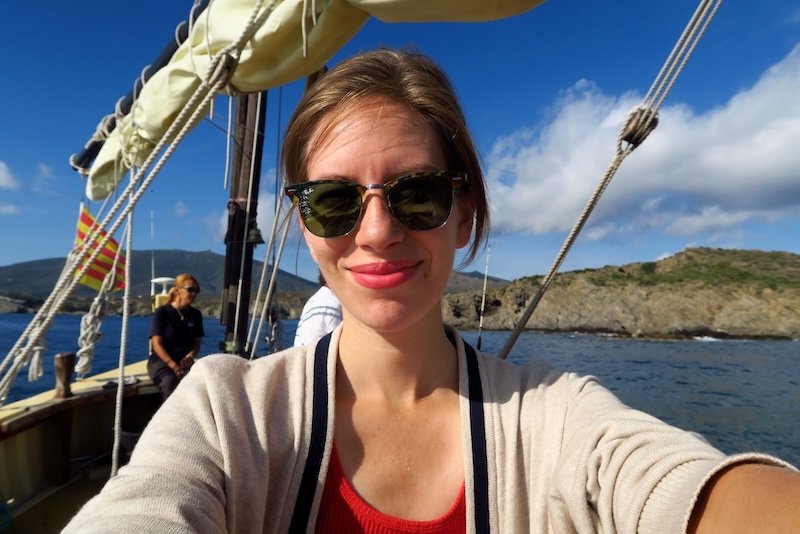
Well, I went back to Spain again this autumn and there’s a new place that has caught my imagination: Costa Brava.
My visit, though brief, had everything I could have asked for: charming little towns, rugged landscapes without the crowds, and an abundance of delicious food. I also enjoyed some fun yet leisurely activities like sailing, hot air ballooning, wine tasting, and mixing up my own gin and tonics, but more on that later. For now, let me share some of my personal highlights from Costa Brava. Here is our Costa Brava Travel Guide!
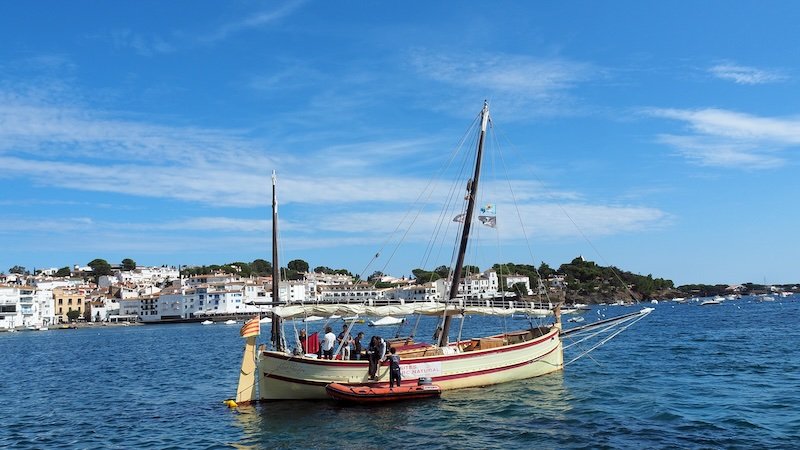
Things to Do, See, Eat, Drink & Experience in Costa Brava!
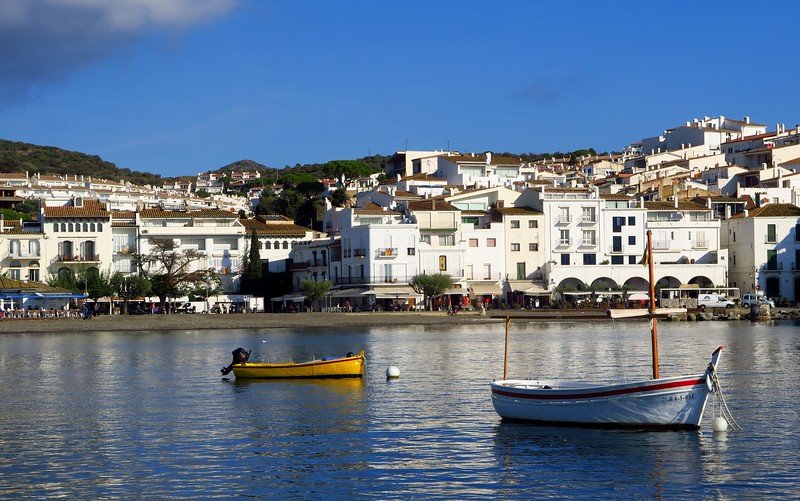
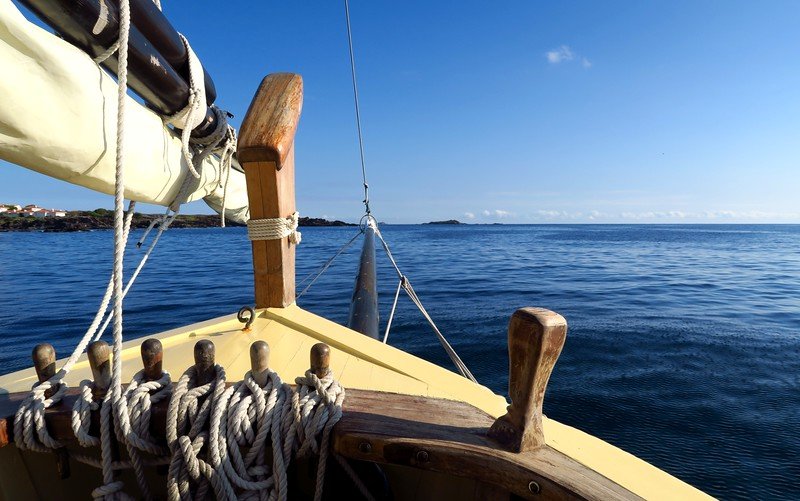
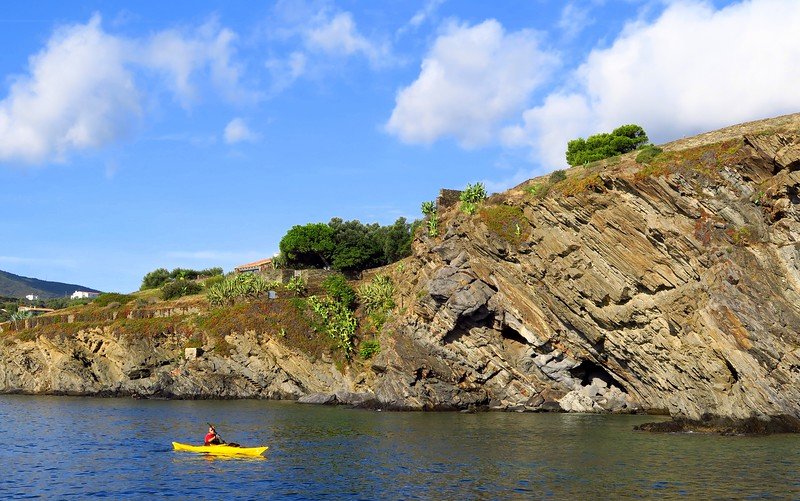
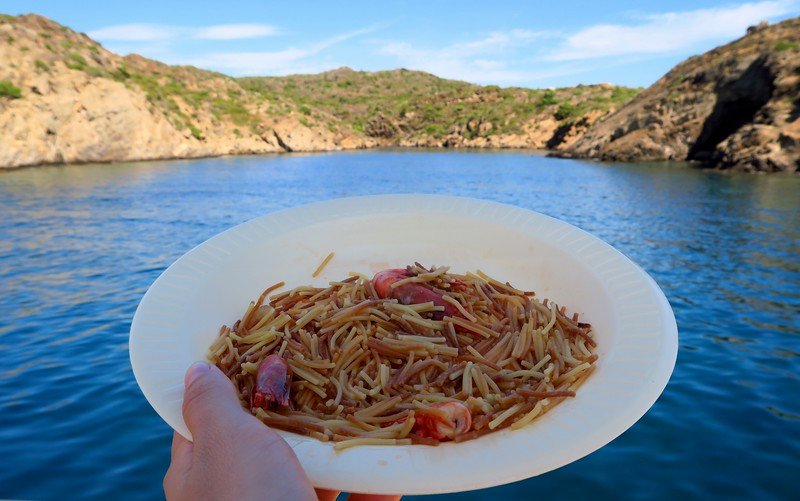
Sailing out to Cap de Creus
Sailing out from Cadaqués to Cap de Creus National Park was the perfect way to kick off the trip. Costa Brava has a rugged coastline with dramatic rocky cliffs, but then you also come across these little inlets where the water is perfectly still. It may have been a little chilly in early October, but that didn’t stop the boys from diving off the ship and enjoying the water until lunch was ready.
I took in the sights and had a short cat nap in the sunshine (the rocking motion of boats and trains always lulls me to sleep!), but I perked right up once the food was ready. On the menu we had fresh mussels cooked in white wine and garlic, followed by fideuà, which is a noodle and seafood dish cooked in fish broth; it’s quite similar to a paella except you swap the rice for noodles – but don’t tell a single Spaniard I compared the two dishes! That delicious lunch was then followed by a Drunk Spongecake soaked in sugar and rum – yum!
Our ship, the Sant Isidre, also had quite the history; since it was first built in 1925, it has been used as a fishing vessel, a coast guard patrol ship, a war ship in the Spanish Civil War, and now it takes visitors out to sea.
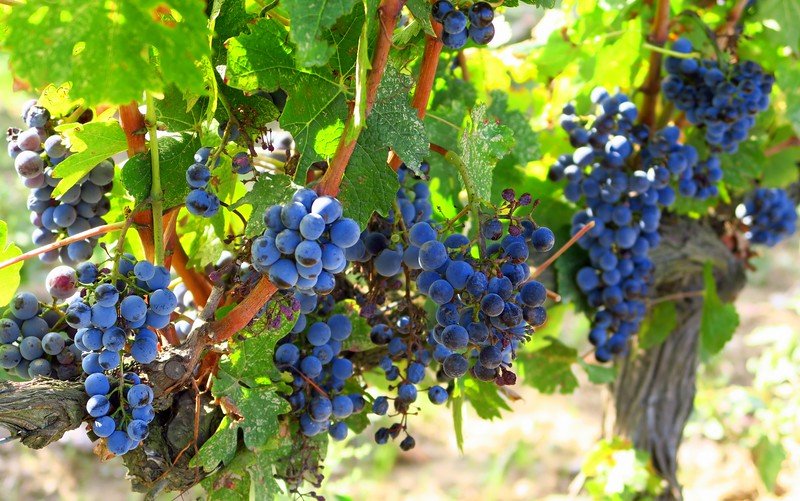
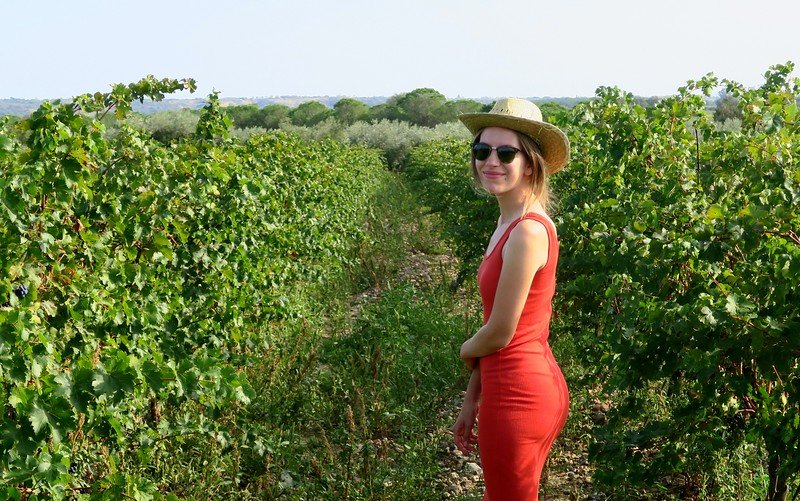
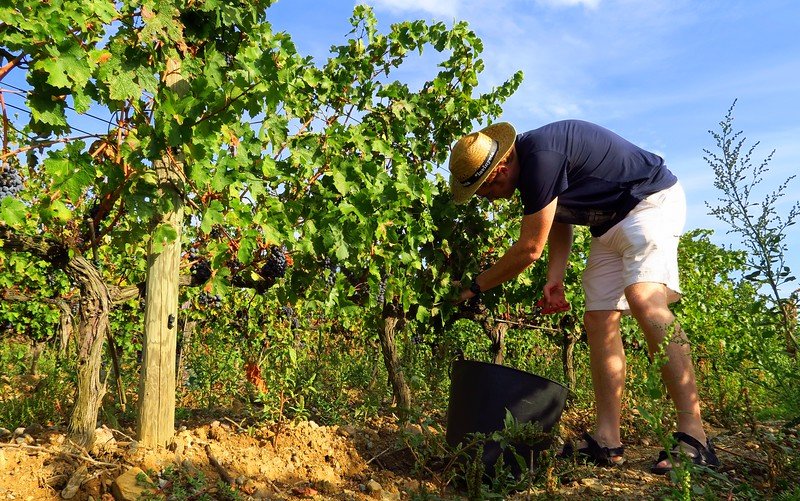
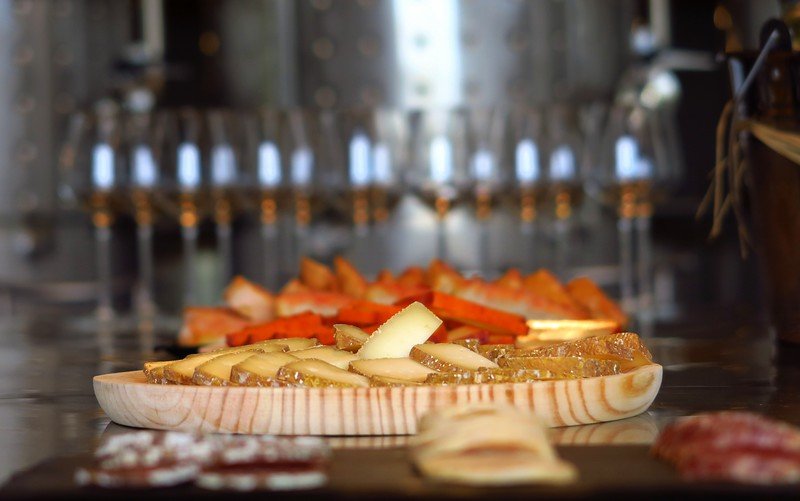
Trying my hand at grape harvesting
Since it wouldn’t be a proper foodie trip without hitting up at least one winery, we made our way to La Vinyeta located in Mollet de Peralada. The nice thing about visiting Costa Brava in early October was that the wine harvest season was just coming to an end and we got to get our feet dirty…quite literally!
First of all, I loved that this winery was run by a young couple who took a chance on their dream. Despite not having a background in winemaking – “I’m the son of butchers,” Josep confessed – they bought the land, learned the ropes, and started a business.
We toured the vineyard with Josep and his passion for wine was apparent from the minute we met him. He walked our group through the grounds and told us stories of doubtful neighbours who thought he was silly for planting grapes in fields where there hadn’t been any before. “They won’t grow!” they warned him, but in the end, he proved them wrong.
After learning how La Vinyeta came to be, Josep put us right to work. He handed us scissors and buckets, and off we went to collect grapes. It wasn’t too long before our little group had filled up a giant tub with grapes, and then it was time to stomp them the good ol’ fashioned way. You can read a bit more about our afternoon of grape stomping and wine drinking here, but I can honestly say that it was one of the best winery tours I’ve ever been on! It was super fun, everyone got involved, and the tasting were casual so you felt like you were drinking amongst friends.
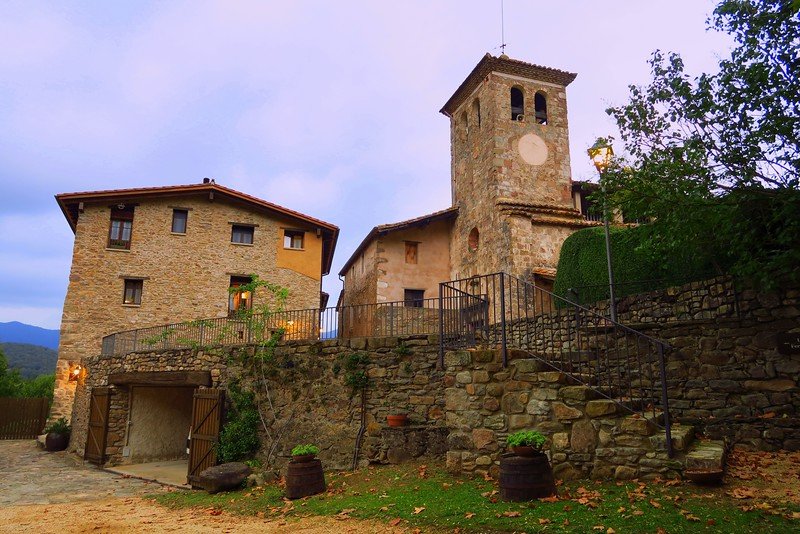
Spending the night at Hotel Mas La Ferreria
I’ve been able to stay in some pretty cool accommodations over the course of my travels – a treehouse lodge and a former jail come to mind! – however, this is the closest thing I’ve experienced to time travel.
Hotel Mas La Ferreria is set inside the grounds of the church of Santa Margarida de Bianya, and get this, the building dates back to the 14th century! That’s right, the first record of occupation goes back to the year 1339 when a blacksmith lived in the building adjacent to the church, which is why the hotel is named La Ferreria, meaning ‘the blacksmith’s workshop’.
What I liked about this hotel is that even though the building offers you all the modern comforts, it still retains a lot of its charm with exposed stone walls, wooden beams, and handcrafted window shutters. It’s rugged, but it’s also cozy and inviting – I only wish I’d had more than one night here!
Learning to make the best Gin & Tonic
If you read about my recent trip to Edinburgh, you’ll know that I recently discovered gin and that it has become my new favourite drink. Well, while in Costa Brava I got to take my cocktail making skills even further with a Gin & Tonic workshop run by Gerard from Cocktail Time; and since this is Costa Brava, I think it goes without saying that we tried some Catalan gin!
We started things off with a classic G&T. Chilled glass, ice, gin, tonic water, and an orange peel for a little bit of zest. Once everyone had a glass in hand, Gerard, the gin master, taught us how to create some fancy gin and tonics that I had never tried before.
The one that blew us all away was an oak infused gin and tonic. Gerard pulled out some kind of contraption where we added oak tree shavings, burned these, and then used the smoke to infuse our G&Ts for a unique flavour. The whole spectacle looked like a magic show as smoke slowly filled the glass, and there was plenty of ooh-ing and ahh-ing from a rather merry crowd.
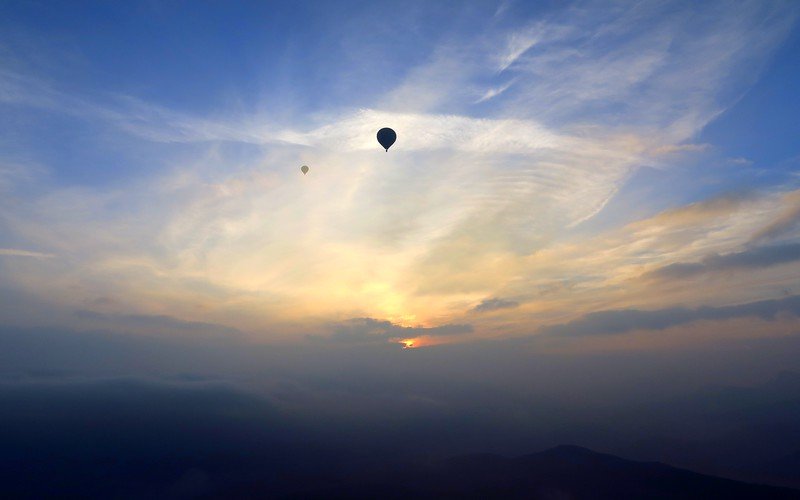
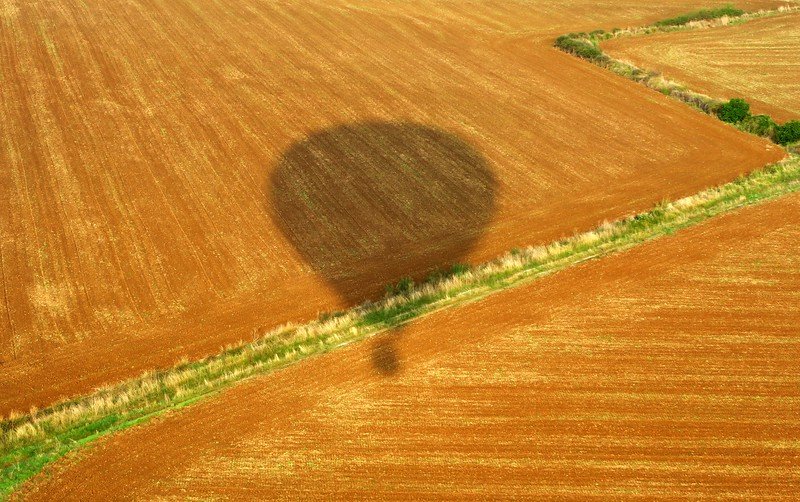
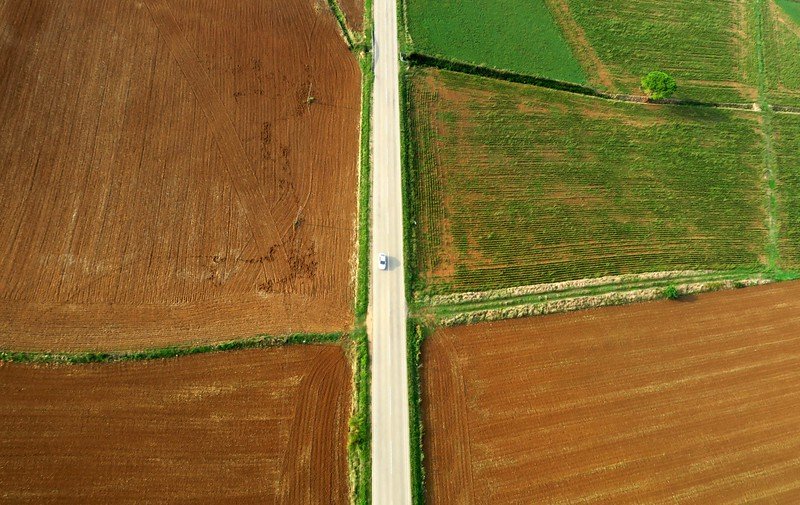
Flying in a hot air balloon over volcanoes
The following morning we rose bright and early and drove to the edge of the Pyrenees mountains for a bucket list experience: a hot air balloon flight! Most of our group had never flown in a hot air balloon before, so we were giddy with excitement and maybe a little bit of nerves.
We arrived at Vol de Coloms under the cover of night and warmed up with tea and coffee while the balloons slowly filled up and came to life.
If I had to describe the hot air balloon ride in one word, it would be: peaceful. We rose slowly and steadily through the clouds, with only the burner interrupting the silence every once in a while. The ground was mostly covered in fog but it wasn’t long before we were above the clouds, floating just below 2000 meters.
Here I learned that La Garrotxa Volcanic Zone Natural Park is made up of 45 volcanoes which have been dormant for thousands of years, but are not extinct. The park lies between the Pyrenees Mountains and the coastline, and it made for a pretty cool landscape. Once we were up in the air, our pilot brought out the bubbly and we enjoyed some glasses of cava with cake. We got to watch a sunrise of soft pastels in shades of peach and periwinkle.
By the time we were back on the ground it was mid-morning, so our flight was followed up with a Catalan brunch. We had slices of bread with tomato pulp and olive oil, a mixed platter of deli meats, hot beans with olive oil, and of course, lots of coffee.
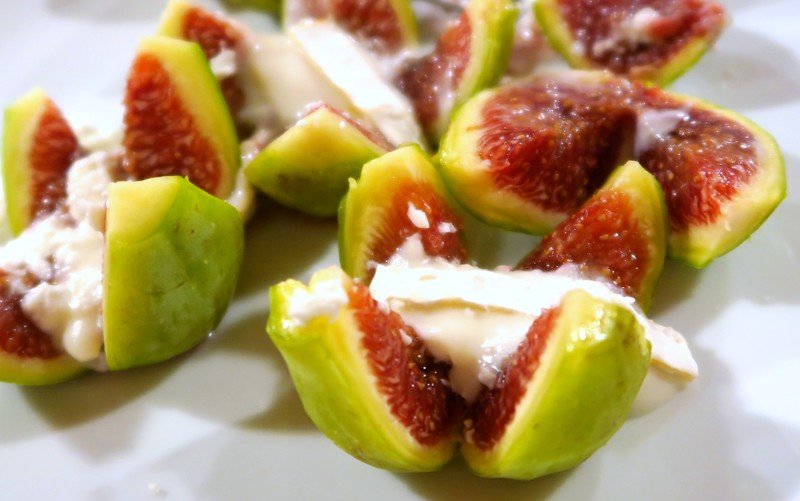
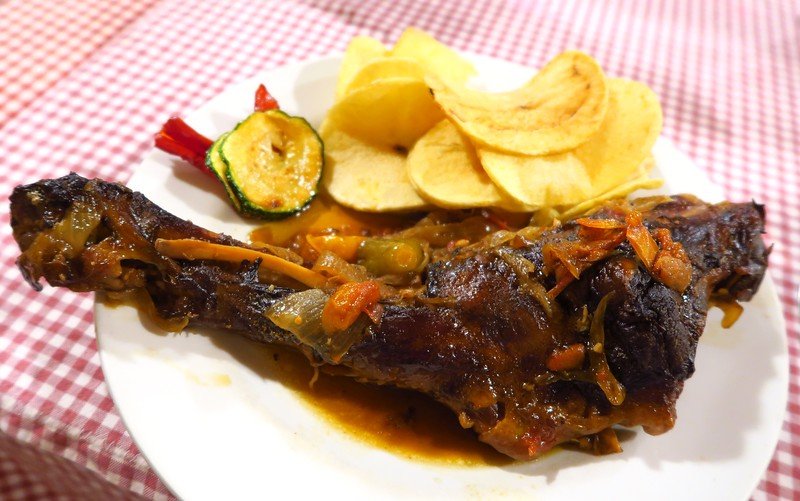
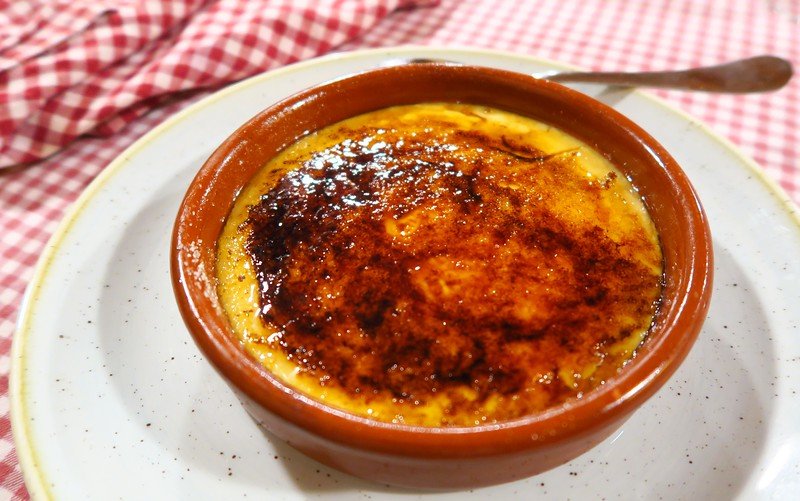
Feasting on traditional catalan food
And what better way to wrap up a whirlwind trip through Costa Brava than with a feast among friends?
For our last dinner in Costa Brava, our group went to Restaurant Can Xifra, which is a little restaurant in the outskirts of Girona. Finding the place in the dark proved to be a little tricky and there may have been one moment when we were accidentally headed for the French border, but in the end we arrived, and let me tell you, this will go down as one of the most delicious meals I had in Costa Brava.
We ordered a whole bunch of little appetizers to share featuring: your classic pan con tomate y ajo (you rub raw garlic and tomato on a piece of bread), roasted red peppers and asparagus with olive oil, and then figs with goat cheese, which could have been a dessert in and of itself – and those were just my favourite dishes of the bunch.
By the time we had snacked on the half a dozen appetizers at the table, I was stuffed, but there was still dinner to be had. I ended up going for lamb shoulder with a side of potatoes, and in true Spanish fashion, the meal was of massive proportions. The lamb was tender and falling off the bone, and I ended up sharing with a few friends at the table.
Sometime during the meal, a porrón appeared at the table. This is a wine pitcher (that looks a bit like a watering can for your plants!) and rather than using it to pour yourself a glass of wine, you use it to drink out of. The tricky part is that the porrón can’t touch your lips, so you have to start pouring the stream of wine midair and hope you aimed it right at your mouth. If it sounds tricky, it is! It’s a good thing I covered myself in napkins, because I poured a good amount down my chin.
After all that came dessert in the form of crema Catalana, a rich creamy custard with a layer of caramelized sugar on top that you crack with your spoon; I may have been full, but I finished every last bite of my dessert!
And that was my introduction to Costa Brava! I feel very fortunate to have been able to discover this slice of Spain. Next time I want to come back with at least 2 weeks to spare and a plan to hire a car and take my time exploring the region. For a closer look at what I got up to on this visit, here’s a video that Sam and I filmed:
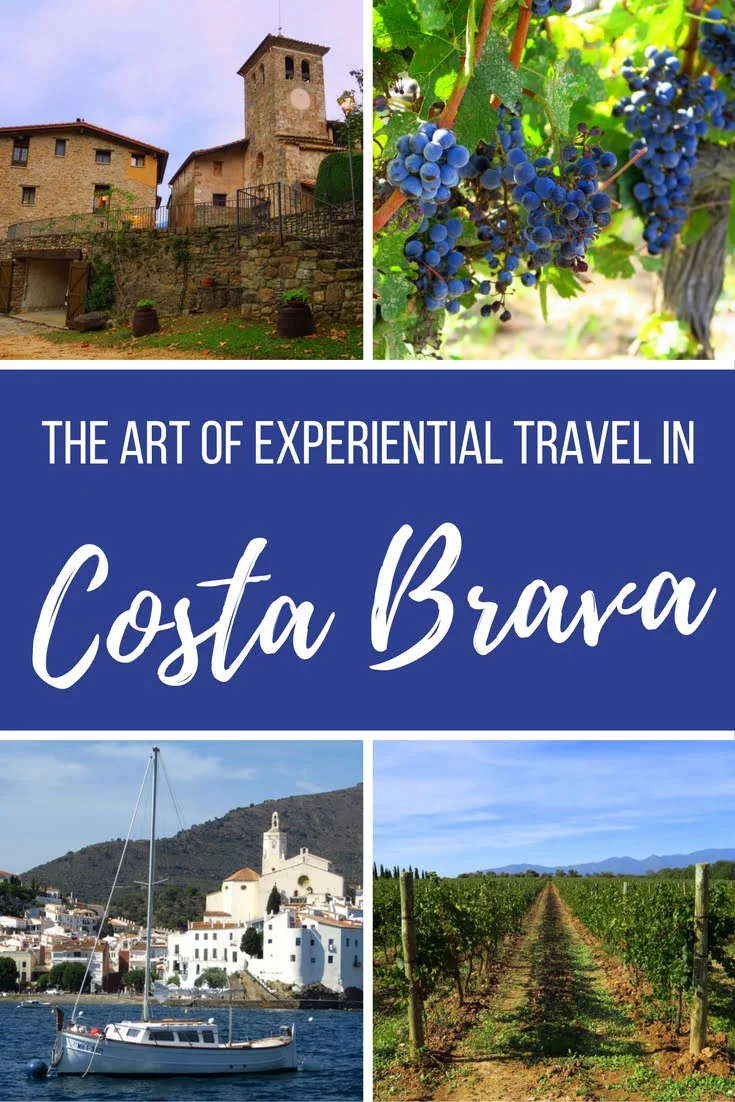
Plan Your Own Experiential Costa Brava Trip (Routes, Towns, Food & Slow Adventures)
Where to Base Yourself (Town Snapshots You Can Actually Use)
| Base | Vibe in 3 Words | Why Stay Here | Good For |
|---|---|---|---|
| Cadaqués | Whitewashed, arty, wild | Cap de Creus boat days, Dalí’s Portlligat house, craggy coves | Photographers, couples, sailors |
| Begur (Sa Tuna/Aiguablava) | Hilltop, chic, coves | Camí de Ronda sections, beach-hop by bus/car | Hikers, beach people |
| Calella de Palafrugell & Llafranc | Low-rise, classic, promenades | Sunrise swims, kayak/SUP, Cap Roig gardens | Families, slow mornings |
| Tossa de Mar | Walled, photogenic, nearby | Easy bus access, castle views, gentle beaches | First-timers sans car |
| Palamós | Working, seafood, local | Fish market & prawns, coastal paths | Foodies, families |
| Girona | Historic, foodie, convenient | Train hub, old town rambles, day-trip base | Car-free travelers |
| Figueres | Dalí, practical, transport | Dalí Theatre-Museum, trains/buses | Art lovers, point-to-point |
| La Garrotxa (Olot/La Vall d’en Bas) | Volcanic, green, pastoral | Hot-air balloon rides, easy hikes | Nature, quiet stays |
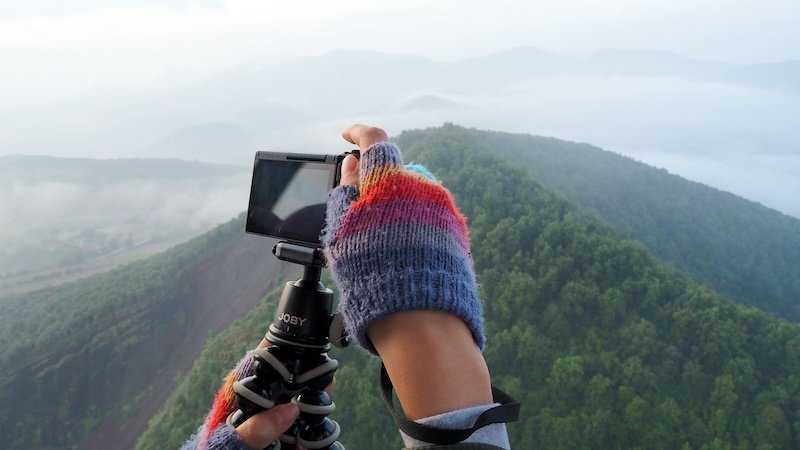
Two Easy Costa Brava Itineraries To Consider
3 Days: “First Taste” Coastal Long Weekend
Base: Calella de Palafrugell (no car needed, but nice to have)
Day 1 – Calella & Llafranc
- Lazy check-in, promenade stroll, first dip.
- Sunset walk to Sant Sebastià lighthouse (breezy views over terracotta roofs and coves).
- Dinner of suquet de peix (Catalan fish stew) and a glass of DO Empordà white.
Day 2 – Camí de Ronda + Kayak
- Morning Camí de Ronda coastal walk: Calella → Llafranc → Cala Pedrosa (pack water shoes).
- Afternoon kayak/SUP from Llafranc to little caves and inlets.
- Evening vermut hour (yes, vermouth before dinner is a thing—order it “amb sifó”).
Day 3 – Begur Coves + Palamós Seafood
- Drive/bus to Sa Tuna and Aiguablava (Begur). Snorkel, cove-hop.
- Late lunch in Palamós—if you see gambes de Palamós (red prawns), say yes.
- Return, gelato, feet up. Bliss.
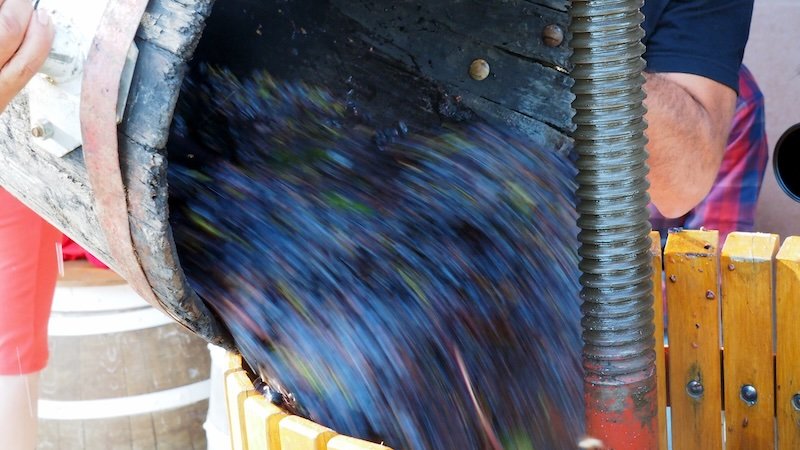
7 Days: “Experiential Costa Brava” Loop
Bases: 4 nights Begur/Calella + 3 nights La Garrotxa (Olot/La Vall d’en Bas)
Day 1 – Arrival & Settle
Check in, beach stroll, G&T mastery at sunset (draw on that workshop inspiration!).
Day 2 – Sailing & Coves
Half-day boat from Cadaqués or Llafranc, lunch onboard or quay-side (fideuà for the table). Nap, swim, repeat.
Day 3 – Camí de Ronda + Cap Roig
Walk a pretty section (Llafranc ↔ Calella ↔ Golfet). Afternoon Cap Roig Botanical Garden; if you’re here in summer, the Cap Roig Festival is magical.
Day 4 – Dalí Triangle (Pick Two)
- Figueres: Dalí Theatre-Museum (surreal and sparkly).
- Portlligat: Dalí’s house (book timed ticket).
- Púbol: Gala’s castle (quieter, romantic).
Gelato in Cadaqués to finish.
Day 5 – Winery & Medieval Villages
- La Vinyeta or another DO Empordà bodega for tastings (and if harvest: grape-picking/stomping fun!).
- Pals, Peratallada & Monells cobbles, arcades, and cafés.
- Drive into La Garrotxa (Olot/La Vall d’en Bas) for your countryside stay.
Day 6 – Ballooning & Volcano Walks
Pre-dawn hot-air balloon over the volcanic zone (cava breakfast in the sky), then gentle craters like Santa Margarida and Croscat.
Farm-to-table dinner, earlyish night.
Day 7 – Markets & Masias
Local market (Olot is great), picnic in beech woods, pool time at your masia (country house). Final crema catalana for science.
Day 8 – Depart
Return via Girona or Barcelona; if time, coffee in Girona’s old quarter under the arcades.
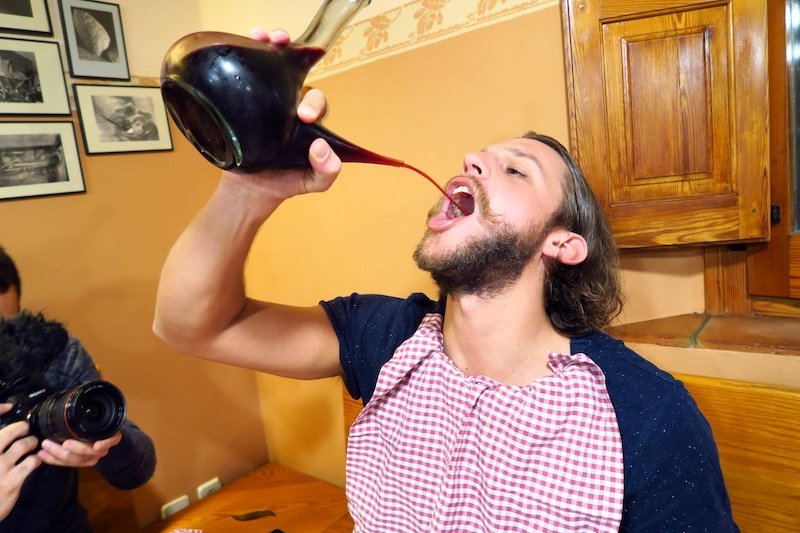
Essential Experiences to Mix & Match
Sail to Cap de Creus
- Rugged headlands, glassy coves, seals-eye views of Cadaqués.
- Motion-sickness prone? Sit mid-ship, snack lightly, eyes on horizon.
- Ask to anchor for swims/snorkel; bring a lightweight towel and reef-safe sunscreen.
Walk the Camí de Ronda
Old smugglers’ footpaths hugging the sea = the dreamiest “commute” between coves.
Good sections:
- S’Agaró boardwalk: flat, elegant villas, family-friendly.
- Calella ↔ Llafranc ↔ Golfet: cliffs, pines, little staircases to rock pools.
- Begur coves: steeper, wilder; reward = Sa Tuna’s stone boatsheds.
Taste DO Empordà (Wine & Olive Oil)
- Expect fresh whites, savory rosés, mineral reds (garnatxa/carinyena), plus sweet Garnatxa dessert wines.
- Pair with anchovies from L’Escala, tuna ventresca, local cheeses, arbequina olive oil.
- If harvest-time: ask for hands-on picking/stomping—cheeky and memorable.
Follow Dalí’s Footsteps
- Figueres museum: go when doors open.
- Portlligat house: timed entry, small groups—book ahead.
- Púbol castle: fewer crowds, lots of romance and costumes.
Hit the Medieval Trio
- Pals for golden stone and viewpoints.
- Peratallada for arcaded squares and ivy.
- Monells for that movie-set plaza.
Café con leche + ceramic bowls? Yes.
Rugged Nature Days
- Cap de Creus: drive to the lighthouse for lunch with lunar views.
- Aiguamolls de l’Empordà: easy bird-watching boardwalks.
- La Garrotxa: beech forests, crater chapels, picnic tables and shade.
Sea Kayak or SUP
Gentle mornings are best. Hug the rocks for grotto peeks, land on tiny beaches for a snack. Life vests and hats are your friends.
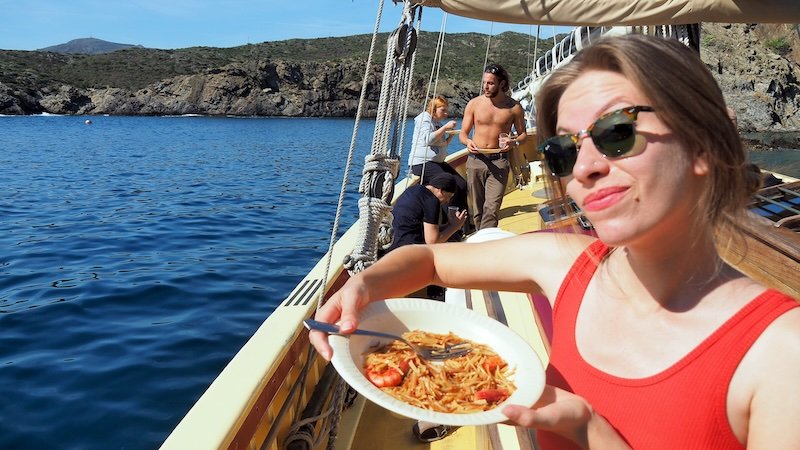
Costa Brava Food & Drink Cheat Sheet
Must-Try Dishes & Bites
- Fideuà – noodle paella’s briny cousin (with aioli swirls).
- Suquet de peix – saffrony fish stew served in the pan.
- Pa amb tomàquet – crusty bread with tomato pulp, olive oil, and a whisper of garlic.
- Gambes de Palamós – ruby prawns; grilled, simply.
- Anxoves de L’Escala – anchovies with olive oil; perfect with vermut.
- Esqueixada – shredded salt cod salad with peppers and olives.
- Mar i muntanya – “sea & mountain” combos (think chicken + shrimp).
- Crema catalana – crackly sugar cap; save room.
When Catalans Eat
- Vermut hour: around 12:30–13:30 (vermouth + olives, chips, anchovies).
- Lunch: 13:30–15:30 (menus del día are great value midweek).
- Dinner: from 20:30–22:30 (later in summer).
Your Costa Brava Bar Order
- Aperitif: Vermut amb sifó (with seltzer).
- With seafood: chilled Empordà white or a serious rosé.
- After dark: Gin & Tonic in a balloon glass—add a citrus twist or a rosemary sprig and you’ll fit right in.
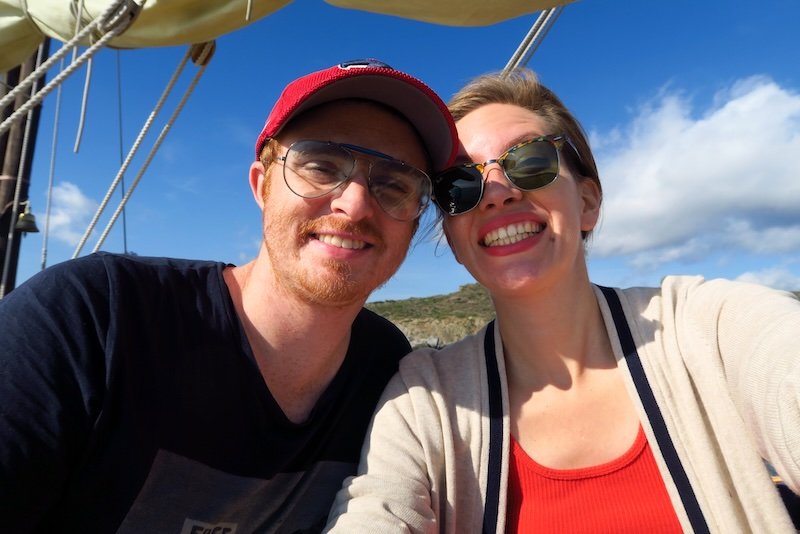
When to Go (Crowds, Weather & What’s On)
| Season | Weather & Sea | Pros | Consider |
|---|---|---|---|
| Spring (Apr–May) | Mild; sea cool | Wildflowers, quiet coves, ideal for hiking & cycling | Pack layers; some seasonal places open mid-spring |
| Summer (Jun–Aug) | Hot; sea perfect | Beach life, festivals (Cap Roig), late sunsets | Reserve parking/hotels; go early to popular coves |
| Early Autumn (Sep–Oct) | Warm; sea still lovely | Harvest season (wineries), golden light, fewer crowds | October evenings cool inland |
| Late Autumn–Winter | Cool; sea chilly | Empty beaches, cheap stays, dramatic skies | Some coastal hotels/restaurants take a break |
Getting There & Around (Simple, Promise)
- Fly: Barcelona (BCN) is the main hub. Girona (GRO) works seasonally with low-cost carriers.
- Train: Fast trains to Girona and Figueres Vilafant from Barcelona/Madrid.
- Bus: Connects towns (reliable between Girona–coast), but service can be sporadic on Sundays/holidays.
- Car: Best freedom for coves, vineyards, and inland villages. Expect some tolls (increasingly fewer), free village parking on the outskirts, and tight lanes in old towns—take it slow.
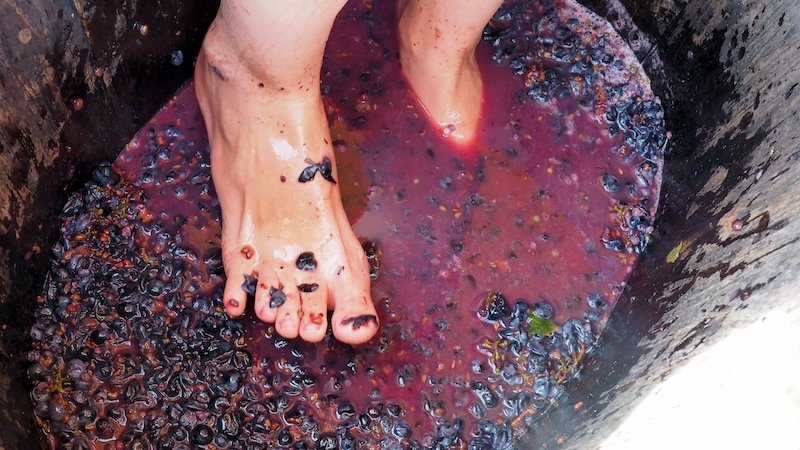
What It Costs (Ballpark, So You Can Plan)
| Category | Budget | Mid-Range | Splurge |
|---|---|---|---|
| Stay (per night) | €50–€120 (guesthouse/hostel/aparthotel) | €120–€250 (boutique hotel/sea-view room) | €250–€500+ (design hotel/masia suite) |
| Meal (per person) | €10–€20 (menu del día/tapas) | €25–€45 (seafood, wine) | €60–€120 (tasting menus, top seafood) |
| Activities | Free–€20 (walks, gardens) | €30–€70 (kayak/SUP, tasting) | €90–€250 (sailing, ballooning) |
Beach & Cove Quick Picks
- Family-friendly: Llafranc, Tamariu, Port Bo (Calella) – easy entries, lifeguards in season.
- **Photogenic: Sa Tuna (Begur), Aiguablava (Begur), Cala S’Alguer (fishermen’s huts near Palamós).
- Snorkel spots: Cala del Golfet, Aiguafreda (usually clearer water mornings).
- Wilder feel: Cap de Creus pockets, Cala Jugadora (access varies; wear sturdy shoes).
- Sunrise lovers: Calella de Palafrugell arcades and boats = heart-eyes.
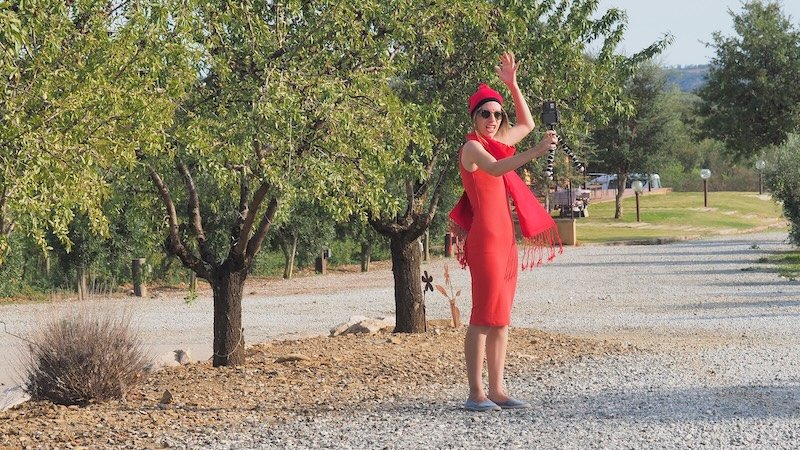
Costa Brava Quick Checklists
Pack Smart (Coast + Countryside)
- Light layers + a warm evening layer (even in summer inland)
- Swim gear, rash guard, reef-safe sunscreen, hat
- Water shoes + comfy walking shoes
- Dry bag + quick-dry towel
- Reusable bottle (fountains abound)
- Small first-aid (plasters, antihistamine for jellyfish days)
- Photocopies of ID/insurance, and a few euros in cash
Responsible Costa Brava
- Stay on signed paths (dunes and cliff plants are fragile)
- Take everything out that you bring in (bins can be far)
- Use refillable bottles; say sí to tap water
- Choose local seafood in season; avoid endangered species
- Reef-safe sunscreen + no touching marine life when snorkeling
Driving & Parking
- Book smaller car category (easier in villages)
- Download offline maps; signal drops in coves
- Respect blue-line zones (pay), green (residents), white (free)
- In summer, use park-and-ride shuttles where offered

Rapid Fire (Tiny Answers to Big Planning Questions)
Do I need a car?
Not strictly—Girona + coastal buses work—but a car unlocks coves, vineyards, and Garrotxa with zero stress.
How many bases for a week?
Two. Coast (4–5 nights) + inland (2–3 nights) is the sweet spot.
Is the sea swimmable outside summer?
Yes in June–October; hardy folks swim in May/November. Mornings are calmest.
Any kid-friendly wins?
Boat trips, easy Camí de Ronda boardwalks, Llafranc’s gentle beach, Palamós fish museum/market.
Vegetarian-friendly?
Absolutely: escalivada, pa amb tomàquet, truita (omelette), grilled veggies, salads, cheeses, crema catalana. Just double-check broths in rice/noodle dishes.
Can I replicate that G&T class?
You can get fancy: chilled balloon glass + ice, good Catalan gin, quality tonic, orange peel or rosemary. For smoky drama, a cinnamon stick briefly flamed and waved over the glass gives a hint of oak without gadgets.
Costa Brava Travel Guide FAQ (Experiential, Slow & Tasty): 12 Essential Q&As
What’s the best home base for an experiential Costa Brava trip?
For a car-free, coast-first intro, base in Calella de Palafrugell/Llafranc; for rugged coves and hiking, choose Begur; for art + sailing + Cap de Creus, Cadaqués; for inland ballooning/volcano walks, La Garrotxa (Olot); for transport links and food, Girona.
How many days should I plan—and how many bases?
A sweet spot is 7 days / 2 bases: 4–5 nights on the coast + 2–3 nights inland (La Garrotxa). For a taster, 3 days on the coast works; for depth, 10–14 days with 3 bases (Cadaqués/Begur + Girona + La Garrotxa).
Do I need a car, or can I rely on public transport?
You can do a lot with trains to Girona/Figueres and coastal buses, but a small rental car unlocks tucked-away coves, vineyards, and beech forests on your own schedule—especially useful in shoulder seasons and for sunrise/sunset flexibility.
What are the most “experiential” activities to prioritize?
- Sail from Cadaqués or Llafranc to Cap de Creus (swim/snorkel coves).
- Hot-air balloon over La Garrotxa Volcanic Zone (cava breakfast!).
- Walk the Camí de Ronda (Calella ↔ Llafranc ↔ Golfet; Sa Tuna/Aiguablava).
- DO Empordà tastings (wine/olive oil; harvest grape-stomping if timed).
- Dalí Triangle (Figueres, Portlligat, Púbol) for surreal culture.
When should I go to balance weather, crowds, and experiences?
Late spring (Apr–May) and early autumn (Sep–Oct) are goldilocks: warm days, swimmable sea by late spring/early fall, harvest season at wineries, and lighter crowds. Summer (Jun–Aug) is festive but busy—book everything.
What should I eat and drink to taste Costa Brava properly?
Order fideuà, suquet de peix, anxoves de L’Escala, gambes de Palamós, mar i muntanya, and finish with crema catalana. Sip vermut amb sifó pre-lunch, DO Empordà whites/rosés with seafood, and a proper Gin & Tonic after dark.
How hard are the coastal walks and nature outings?
The Camí de Ronda ranges from flat boardwalks (S’Agaró) to stair-heavy cliff paths (Begur coves). Plan easy 1–3 hour sections with swim stops. Inland, La Garrotxa trails are gentle crater loops—great for families and casual hikers.
Can I recreate that Gin & Tonic class vibe at home?
Yes: chill a balloon glass, add clear ice, Catalan gin, top with quality tonic, and garnish with orange peel or rosemary. For a smoky hint, briefly warm a cinnamon stick and waft over the glass before serving.
What’s a realistic mid-range budget per day?
Expect €120–€250 per room, €25–€45 pp for dinner (more for seafood tasting menus), €30–€70 pp for kayaking/tastings, and €90–€250 pp for sailing/ballooning. Free splendors: coves, promenades, cliff walks, medieval villages.
Any etiquette or sustainability tips I should know?
Eat local/seasonal seafood, use reef-safe sunscreen, pack out your beach trash, and stay on signed paths (dune/cliff flora is fragile). At restaurants, lunch is unhurried; for a porró (wine pitcher), pour without touching your lips—napkins ready!
Is Costa Brava kid-friendly?
Very. Choose gentle beaches (Llafranc, Tamariu), flat Camí sections, boat trips, and the Palamós fish market/museum. Inland, ballooning is age-dependent (check operator), but volcano walks and farm visits are easy wins.
How do I fit Dalí, coves, vineyards, and ballooning into one week?
Use a 7-day loop: coast base (3–4 nights: sailing + Camí + Cap Roig gardens) → Girona/Empordà day (Dalí, winery, medieval villages) → La Garrotxa (2–3 nights) for ballooning + volcano walks, then out via Girona/Barcelona.
This post was brought to you as a result of the #EuroFoodTrip campaign, created and managed by iambassador in partnership with Costa Brava & Girona Pyrenees and Emilia Romagna Tourism.
Have you done any travel in Costa Brava?
What were some of you highlights?

Love Costa Brava, great guide! The hot air balloon experience looks epic!!!
Hot air ballooning was amazing! Really hoping I can do it again on my travels.
Audrey, Costa Brava looks incredible! I fully get you when you say that you crave slower travel with more experiences that aren’t just major sights. I find myself loathing cities on occasion, but smaller towns and the outdoors I feel so electric and energized to explore them. Like the highlands of Scotland recently, that was incredible. Or the smaller coastal towns in off season around Greek islands. I get ya! And now I want to see Costa Brava!
Ahh, the Scottish Highlands would be a great place for slow travel. I’ve seen little bits and pieces on tours, but I’d love to go back with a car and do it myself with more time. I hope you enjoyed your time in Scotland!
Stunning pictures Audrey! It seems you are having a really fun time.
Yes, Costa Brava was a lot of fun!
Costa Brava is a great area. I went to Spain for 3 months and worked on a farm. Before I moved to a farm I wanted to learn Spanish and went to https://expanish.com/compare-spanish-courses-in-barcelona-spain/ I can very much recommend this tho everyone moving to Spain for a longer time.
Hi Audrey, Costa Brava is playing in my thoughts for some time now. Hope I find a break to hop on to this great destination in Spain. The pictures of grape harvesting are interesting indeed. The travel guide is very informative. Thanks a lot …Well done !!!